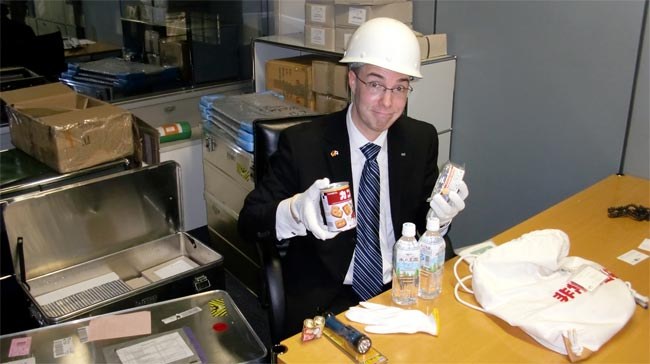東京 にある DLR (DLR in Tokio)
Back in 1982, my then boss, Gert König, sent me to Japan. As an employee of the civil engineering company König und Heunisch, I was tasked on behalf of what back then was the German Federal Ministry of Research and Technology (Bundesministerium für Forschung und Technologie; BMFT) to investigate the safety of German nuclear power stations in the event of earthquakes and to establish the extent to which it would be possible to use the Japanese test facilities, in particular the large vibration table in Tadotsu, for this investigative work. This first visit affirmed my close affinity with Japan, one that continues to the present day. Later, as a University Chancellor, I returned to Japan; on this occasion I developed a series of double-degree programmes with Japanese universities.

Visit to the region affected by the 2011 tsunami – the former location of Arahama, near the city of Sendai.
Another very special meeting of minds arose after the devastating events in 2011 involving an earthquake and a tsunami; my close connection with Japan and my dismay about those events prompted me to collect money at my local Lions Club, which we then sent to Tohoku University in Sendai. Now, let me turn to the opening of the DLR office.

Equipped with an earthquake emergency kit – Niklas Reinke, Head of the new DLR Tokyo Office.
After a whole series of meetings and presentations, it became clear just how well this commitment by DLR is being received, as well as the great potential for close cooperation it brings. Niklas Reinke, who is now our 'Man in Tokyo' , will have his hands full tackling all the various topics from what is a very small office. Nonetheless, with immediate effect, it has been equipped with all the items needed in the event of an earthquake.
At the reception in the residence of the German ambassador, things became very personal indeed for me. The statements by Volker Stanzel and the President of the Japanese Aerospace Exploration Agency (JAXA), Keiji Tachikawa, carried the spirit of the event way beyond the mere exchange of generalities. The fact that many of those who accompanied me on my first visit back in 1982 were there was something that far exceeded my expectations. I was even able to get reacquainted with the people who taught me Japanese at that time, Kato-sensei and Inohana-sensei.
On Friday, we caught the Shinkansen ('Hayabusa 1') to Sendai to sign the DLR@Tohoku agreement with the University of Tohoku. Here too, we received a truly warm welcome and conducted many fruitful discussions. Finally, we were taken to see the areas devastated by the tsunami, living testimony to the lingering threat as well as to the will and determination of the people to move beyond this disaster.
On the evening before our return flight, a few of us got together for a 'Japanese evening' in a small tavern to enjoy biru and sake. At the end, we sat together with our hosts for a commemorative photograph.

DLR@Tohoku, the cooperation agreement between Tohoku University (represented by its President, Susumu Satomi) and DLR.
Internationalism is and will remain a very important aspect of DLR’s work. First and foremost, this involves support for research. At our headquarters, the words of Antoine de Saint-Exupéry ring very true: “Your task is not to foresee the future, but to enable it.” To rephrase that sentiment slightly: “International research cooperation cannot be planned, but it can be made possible.” Now it is up to the scientists at DLR to make the most of the opportunities afforded by the opening of the DLR Tokyo Office.
As Chairman, I do not see myself as a missionary or as an acquirer of relevant international research activities. Instead, I see myself as a facilitator and a door opener.
Top photo: Commemorative plaques for disaster relief donors in the wake of the tsunami.
All images, credit: DLR, CC-BY.
Tags:
